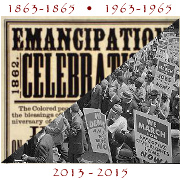This page offers supplementary resources for readers of our book, Interpreting Slavery at Museums and Historic Sites (Rowman & Littlefield, January 2015), as well as our AASLH technical leaflet, “Developing Comprehensive and Conscientious Interpretation of Slavery at Historic Sites and Museums” (Spring 2014), and our chapter of the same title in Max van Balgooy, ed., Interpreting African American History and Culture at Museums and Historic Sites (Rowman & Littlefield, December 2014).
We encourage readers to contact us with suggestions for additional resources, or requests for other types of material.
— Kristin L. Gallas and James DeWolf Perry
Resources on the history of slavery and emancipation
Resources on the history of race after the Civil War
Resources for addressing issues of slavery and race today
Resources for public historians
Films
Discussion guides
Professional workshops and facilitated dialogues
Resources on the history of slavery and emancipation
- Baptist, Edward E., The Half Has Never Been Told: Slavery and the Making of American Capitalism (New York: Basic Books, 2014)
A new book seeking to tell, in one volume, the full story of slavery in the economic development of the United States and its success in modernizing into a industrial superpower.
- Beckert, Sven, Empire of Cotton: A Global History (New York: Knopf, 2014)
A new, single-volume history of cotton and its central role in the emergence of the modern world economy.
- Chan, Alexandra A., Slavery in the Age of Reason: Archaeology at a New England Farm (Knoxville, Tenn.: University of Tennessee Press, 2007)
An exploration of the lives of enslaved people and slave masters in New England, based on archaeological work at the Royall House and Slave Quarters in Medford, Mass., which was once a 500-acre slave plantation.
- Dattel, Gene, Cotton and Race in the Making of America: The Human Costs of Economic Power (Chicago: Ivan R. Dee, 2009)
A study of the central role of cotton, and therefore of slavery and race, in the history of the United States, including the rise of the textile industry and northern commercial success, territorial expansion, and enduring economic power after emancipation.
- DeWolf, Thomas Norman, Inheriting the Trade: A Northern Family Confronts Its Legacy as the Largest Slave-Trading Dynasty in U.S. History (Boston: Beacon Press, 2008)
In this memoir, Tom DeWolf recounts being part of the journey taken by ten descendants of the DeWolf slave-trading family in Traces of the Trade. He discusses the intellectual and emotional impact of learning that his northern family, like so many others, was deeply enmeshed in slavery, and how this transformed his understanding of issues of race and privilege in his own life.
- Farrow, Anne, Joel Lange, and Jenifer Frank, Complicity: How the North Promoted, Prolonged, and Profited from Slavery (New York: Ballantine Books, 2005)
Written by journalists from the Hartford Courant, based on a series the newspaper ran about Connecticut’s hidden history of slavery, this book is an accessible introduction to the North’s surprisingly deep and significant role in slavery, from early colonial times until the Civil War.
- Lemire, Elise, Black Walden: Slavery and Its Aftermath in Concord, Massachusetts (Philadelphia: University of Pennsylvania Press, 2009)
An exploration of the lives of enslaved people and slave masters in a quintessential New England town, more famous for being the home of leading abolitionists than for being a “slave town” for a century and a half. Addresses how emancipation unfolded in the North, as well, by showing how Concord first segregated its newly emancipated black population, and then systematically drove them away, even while the cause of abolition in the South was gradually becoming more fashionable in the North.
- Manegold, C.S., Ten Hills Farm: The Forgotten History of Slavery in the North (Princeton, N.J.: Princeton University Press, 2010)
- Melish, Joanne Pope, Disowning Slavery: Gradual Emancipation and “Race” in New England, 1780-1860 (Ithaca, N.Y.: Cornell University Press, 1998)
This landmark study explores how New England gradually and reluctantly emancipated its slaves in the generations leading up to the Civil War, and the implications of that process for the lives of formerly enslaved blacks and for the North’s creation of the myth of its racial innocence.
- Wilder, Craig Steven, Ebony & Ivy: Race, Slavery, and the Troubled History of America’s Universities (New York: Bloomsbury Press, 2013)
A systematic examination of the ways in which U.S. colleges and universities depended upon slavery and were a breeding ground for the racial ideologies which sustained that institution.
Resources on the history of race after the Civil War
- Blackmon, Douglas, Slavery By Another Name: The Re-Enslavement of Black Americans from the Civil War to World War II (New York: Doubleday, 2008).
Blackmon explores how, during the Jim Crow era, millions of formerly enslaved black Americans and their descendants experienced other forms of involuntary servitude, including forced labor at the hands of a corrupt judicial system.
- Katznelson, Ira, When Affirmative Action Was White: An Untold History of Racial Inequality in Twentieth-Century America (New York: W. W. Norton & Co., 2005)
The history of how economic policies enacted during the Great Depression and in the decades afterwards deliberately excluded black Americans, widening the nation’s racial gap and magnifying our current racial inequalities.
Resources for addressing issues of slavery and race today
- DeWolf, Thomas Norman and Sharon Leslie Morgan, Gather at the Table: The Healing Journey of a Daughter of Slavery and a Son of the Slave Trade (Boston: Beacon Press, 2012)
In this remarkable book, Sharon Morgan, a descendant of enslaved Americans, and Tom DeWolf, a descendant of northern slave-traders, journey together and explore how to heal from this history across racial lines.
- McIntosh, Peggy, “White Privilege: Unpacking the Invisible Knapsack” (1988)
This is a classic summary of many of the ways in which white people, today, benefit from the privilege of being white in our society. This article is a good basis for beginning a nuanced discussion of privileges and disadvantages arising out of our nation’s history of slavery and racial discrimination.
Resources for public historians
- Eichstedt, Jennifer L. and Stephen Small, Representations of Slavery: Race and Ideology in Southern Plantation Museums (Washington, D.C.: Smithsonian Institution Press, 2002)
The authors toured two hundred historic sites in Georgia, Louisiana, and Virginia, finding that the interpretation of slavery in the South still overwhelmingly trivializes the experiences of the enslaved and centers on the glorification of the white slave-owning elite.
- Ellis, Rex, “Re: Living History: Bringing History Into Play.” American Visions 7:6 (December-January 1992), 22-25
Reviews Colonial Williamsburg’s successful reinterpretation of slavery and draws lessons for other sites confronting similar challenges.
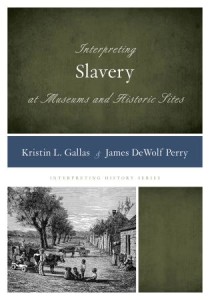
- Gallas, Kristin L. and James DeWolf Perry, “Developing Comprehensive and Conscientious Interpretation of Slavery at Historic Sites and Museums,” American Association for State and Local History Technical Leaflet #266 (2014)
This eight-page guide outlines six pillars for offering an accurate, balanced, and sensitive interpretation of slavery at museums and historic sites.
- Horton, James Oliver and Lois E. Horton, Slavery and Public History: The Tough Stuff of American Memory (New York: The New Press, 2006)
The essays in this edited volume explore contemporary controversies over the memory of slavery and implications for American culture and racial reconciliation.
- Rose, Julia, “Interpreting Difficult Knowledge,” American Association for State and Local History Technical Leaflet #255 (2011)
This eight-page guide outlines a strategy for helping learners to engage with difficult knowledge, called “Commemorative Museum Pedagogy.”
- Shackel, Paul A., Memory in Black and White: Race, Commemoration, and the Post-Bellum Landscape (Lanham, Md.: AltaMira Press, 2003)
An historical archaeologist uses four case studies of Civil War sites and monuments to explore the role of racial dynamics in the nation’s construction of its memory of slavery and race.
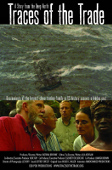 Traces of the Trade: A Story from the Deep North (PBS/POV, 2008)
Traces of the Trade: A Story from the Deep North (PBS/POV, 2008)
This documentary film follows descendants of the DeWolf family of Bristol, R.I., as they learn that their family was the largest slave-trading dynasty in U.S. history. Viewers observe the family today as they journey across the triangle trade of their ancestors, from New England to Ghana to Cuba and back, uncovering a hidden past and exploring the implications of this knowledge for their own identities and for issues of privilege and racial healing today.
This 31-minute video situates the Episcopal Church’s contemporary discussions about race and privilege in the context of the Church’s history of complicity in slavery.
For the national broadcast of “Traces of the Trade” on PBS, members of the Tracing Center staff collaborated with the PBS film series, P.O.V., to create two guides for discussing the film:
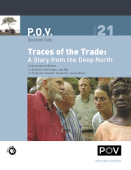 The discussion guide for participants, with background information, questions, and suggestions for discussing the film
The discussion guide for participants, with background information, questions, and suggestions for discussing the film- The facilitator’s guide, with additional advice for those planning to lead discussions of the film
Both guides contain advice which is broadly applicable to discussing similar films, or broader discussions about race, privilege, and the role of the entire nation in the history of slavery.
We also wrote a series of short essays focused on the concerns of discussion participants of different racial backgrounds:
- Viewing/Discussion Experience for African-Americans
- Viewing/Discussion Experience for European-Americans
- Viewing/Discussion Experience for Multi-Racial Audiences
- Viewing/Discussion Experience for Other Race Groups and Ethnicities
Professional workshops and facilitated dialogues
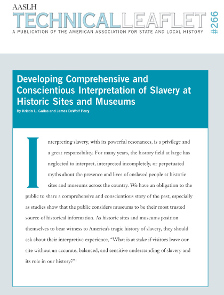 The Tracing Center offers professional workshops for historic sites and museums, and their staff, on all aspects of interpreting the history of slavery. We also facilitate dialogues on how this history illuminates, and complicates, issues of race, racial identity, and privilege, topics which we believe historic site staff must address themselves if they are to interpret this history well for the public.
The Tracing Center offers professional workshops for historic sites and museums, and their staff, on all aspects of interpreting the history of slavery. We also facilitate dialogues on how this history illuminates, and complicates, issues of race, racial identity, and privilege, topics which we believe historic site staff must address themselves if they are to interpret this history well for the public.
For information on workshops and consultations, click here, and for more on facilitated dialogues and other programs, click here.

